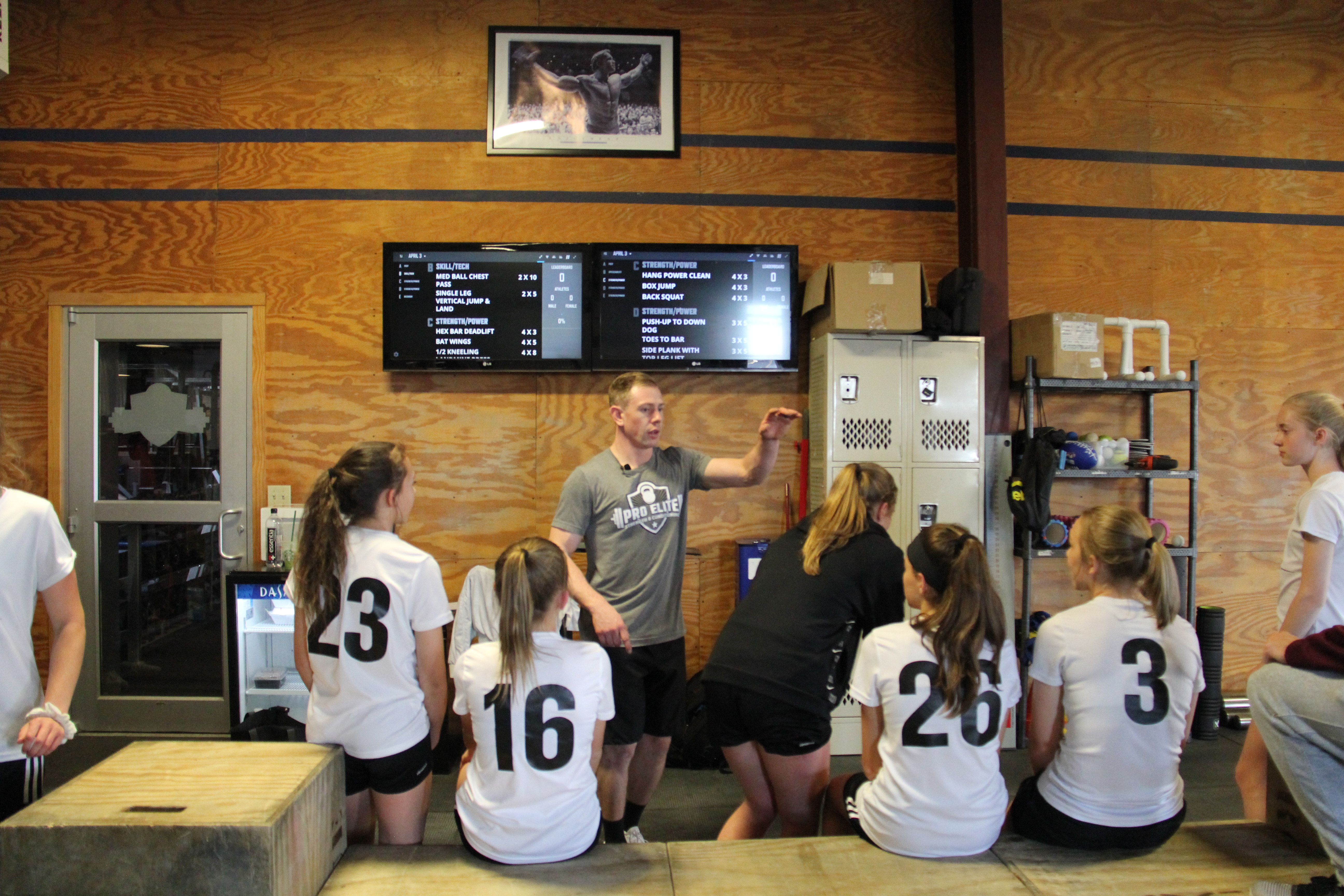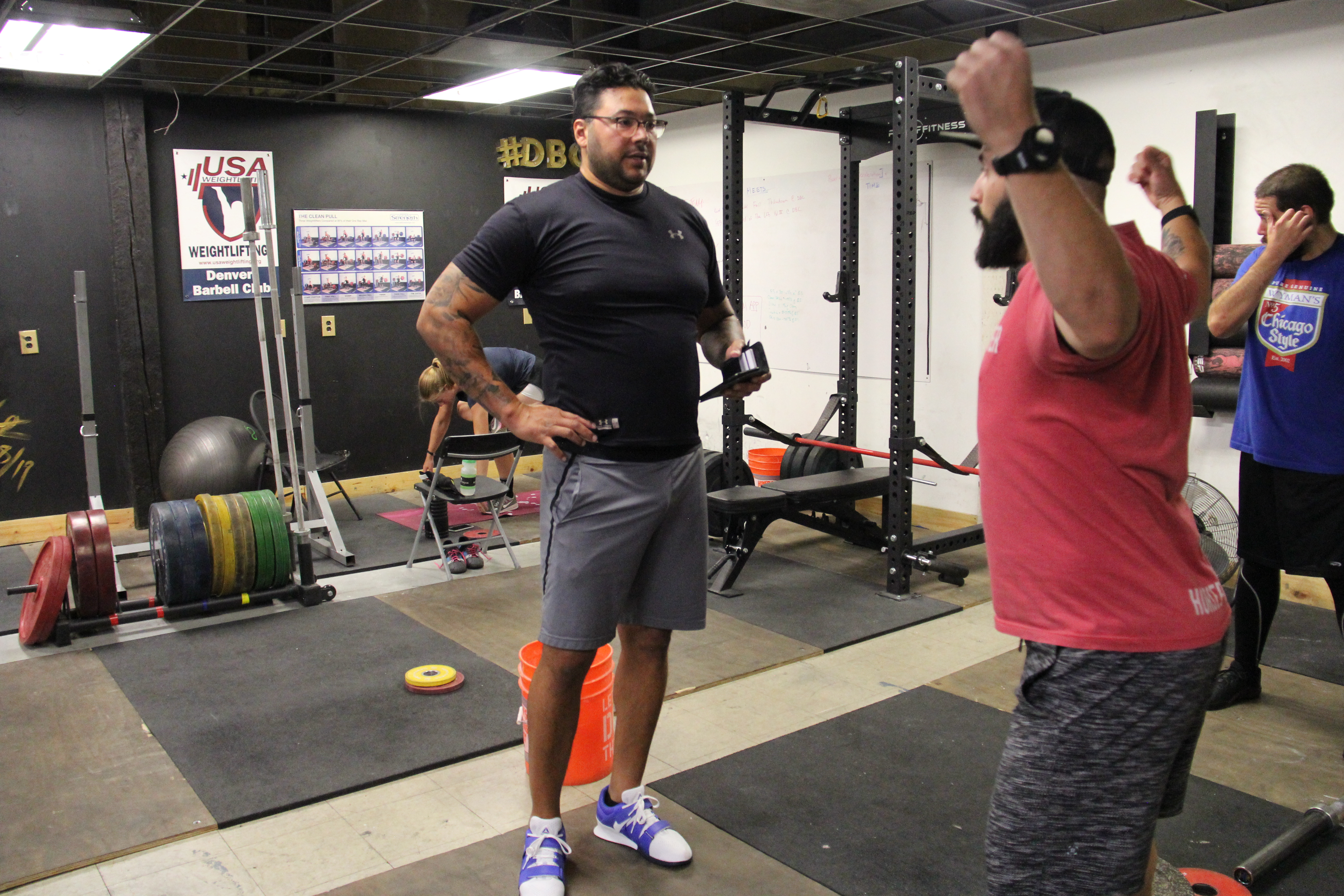Coaching Communication in Strength and Conditioning? Your Buy In Matters More Than Your Athletes
Coach Development | MindsetABOUT THE AUTHOR

Rob Van Valkenburgh
Rob Van Valkenburgh joins the TrainHeroic blog with 10 years experience in the strength game. Having coached elite athletes in both the private sector and the Division 1 collegiate setting, Rob believes that strength has to be the foundation of all athletic movement and that athletes of all levels deserve a comprehensive strength program. Rob writes regularly on his own website FootballStrengthCoach.com where here shares short form articles, training tips & programs, and other items related to strength and performance for football.
// Want help coaching communication? It starts with your buy in
In my first few years as a coach I was positive that I knew exactly what to say and when to say it. In my mind I was already an expert coach. There is something about being in your 20’s that makes you feel like you have it all mastered. I had read all the training books you could think of and I worked hard to know all the little details about each and every lift. I thought I knew it all, but knew nothing about coaching communication.
I was that coach that would yell five different cues for every rep of a squat…
“Chest up”
“Knees out”
“Sit back”
“Tuck your elbows”
“Lower, Lower, LOWER!”
Give me a tight polo and shave my head. I was ‘that guy’.
I was positive I knew it all…
Understanding how to coach Communication

Over time what I found was that my relationship with my athletes only existed in the confines of the training session. No pre-workout conversations. No post-workout shooting the shit. Nothing.
My coaching was simply surface level with my athletes…
When I came to this realization, I was baffled. I had done all the internships, ‘earned my stripes’ stocking the supplement station and hand washing the lifting straps, and I had a bright shiny overpriced certification.
It took me a while to come to this understanding, however, over time I realized I was coaching every athlete the exact same way and that I wasn’t passionate about getting to know who the athlete truly was as a person.
I figured that everyone was like I was as an athlete where you could be loud and bark commands and they’ll respond. I never considered that some athletes need someone to put their arm around them or give feedback through a side conversation and that for some athletes to perform well they just need to know you believe in them.
It became apparent that I didn’t get it. I didn’t realize that the strength game is really just a mentorship program that happens gets you stronger and faster.
Now, at the risk of sounding like an old man, young coaches in this field are extremely lucky. The field of strength and conditioning is on fire with the topic of coaching communication. When they look for resources to help better them as a coach they can find endless amounts of information on non-verbal communication, motivation tactics, and internal vs. external coaching cues.
Here’s my thing with coaching communication – everyone is talking about what to say and how to say it. But, in my mind, the most important thing is relationships and how the athletes feel about who’s coaching them.
The simple truth is that your buy in is more critical than the athletes.
The people you coach can feel your passion just like you can pick up on that of an athlete. If you don’t have passion you can never move your athlete/coach relationship into a range that will allow the athlete to produce the greatest results possible.
Now, why does this improved relationship allow you to bolster their overall training outcomes?
Simple, this allows you to elevate your communication, both verbal and non-verbal. With the biggest increase being in the non-verbal communication realm. This is where one subtle look from you or an athlete can tell you everything you need to know. Without saying a word and without filling the gym with noise pollution you can communicate clearly and effectively.
Have you ever had that friend who you could communicate with by just glancing at them? You should be shooting for that same thing with the athlete’s you coach.
During a training session, your goal as a coach should be to ‘stick and move’. This means that your coaching communiation cues should be direct and in a way that the athlete can process, understand, and implement. To do this, you have to put in the work outside of the training session. You have to invest your time into truly getting to know your athlete’s on a very deep level. Not to mention, that investing in the relationship you have with your athletes is what coaching is all about.
For me, I have found that there are five particular subject areas I want to dive deep into with every athlete I coach.

The five areas are…
- PERSONALITY: How do they need to be coached
- AMBITION: What’s their big dream
- REAL LIFE: What are they interested in outside of athletics
- ARCHIVE: Their history (athletic, injury, and personal)
- FEARS: What their biggest concerns are in the weight room
Let’s break each of those down and dive deep into why they are important.
Every athlete is unique and responds to coaching in different ways. Some athletes you can coach hard and give direct feedback to while some athletes would shut down with that style of coaching. I have found that in many cases putting your arm around an athlete and giving them feedback in a more private setting can be much more effective. The key is that as a coach you have to find out what style of coaching the athlete responds best to. Figuring out an athlete’s personality type will allow you to reach each athlete in a way that works for them, not just what works for you.
Part of the process of coaching is getting a better understanding of what drives an athlete to play the sport. Of course they play because the love it, however, there is always a deeper goal. Some athletes just want to crack the starting lineup while some have the goal to play at the highest level. As a coach, you have to know what their big dreams are and use that as a tool to both motivate them and to bolster the conversations you have with them.
What does the athlete do when they are not practicing, lifting, or being with their team? Do they like video games or do they have other hobbies? What is their home situation like? The role of a coach should cross over into every facet of their life and once it does you have much more ammo to use when trying to create a bond. Once you know what their ‘real life’ is like that can be part of your daily conversations with the athlete. This helps break down walls and allows the athlete to open up more which will eventually lead to more trust in you and your program.
Do you know your athletes history? Knowing their injury history is important but you need to dig much deeper than that. Everyone has a story and that story tells you a lot about who they are as a person. Personally, I have had an athlete who I never knew was homeless at one point in his life. He had a wall up about it and it caused him to be quiet and reserved. Once we had a conversation about his ‘archive’ our entire relationship (and ultimately his buy-in) changed as well. Knowing the archive is about asking the right questions at the right time. Start with less invasive questions and over time get to the big ones.
What in the weight room makes the athlete nervous? Many young athletes are intimidated by this setting and need some reassurance as they get more comfortable. In addition, some athletes have movements that make them nervous like a heavy back squat or their first few lifts returning from injury. Make sure to know these fears and read the athletes body language as they go through the session. Address the fears as they come up and always provide positive reinforcement to help them overcome them. Once you understand the fears of the athlete you can speak with them before the lift about what is coming up and how you will handle it. Saying something like “hey man, we have front squats today and I know your Osgood Slaughter has been light you up. If you feel any pain let me know and I’ll get you a variation” can go a very long way in building that athletes trust in you and overcoming their fears.
Now, once you have an understanding of the athlete from the perspective of each of the five areas listed above, your coaching communication will become more effective and efficient. This allows you to give short, precise, and digestible coach communication in a short amount of time. But, more importantly, your coaching will be more impactful because the athlete will buy into you as a coach.
Once the athlete buys into you and knows you are invested in them, then it’s easy from there.
Are you a better coach after reading this?
More coaches and athletes than ever are reading the TrainHeroic blog, and it’s our mission to support them with useful training & coaching content. If you found this article useful, please take a moment to share it on social media, engage with the author, and link to this article on your own blog or any forums you post on.
Be Your Best,
TrainHeroic Content Team
HEROIC SOCIAL
HEROIC SOCIAL
TRAINING LAB
Access the latest articles, reviews, and case studies from the top strength and conditioning minds in the TH Training Lab

